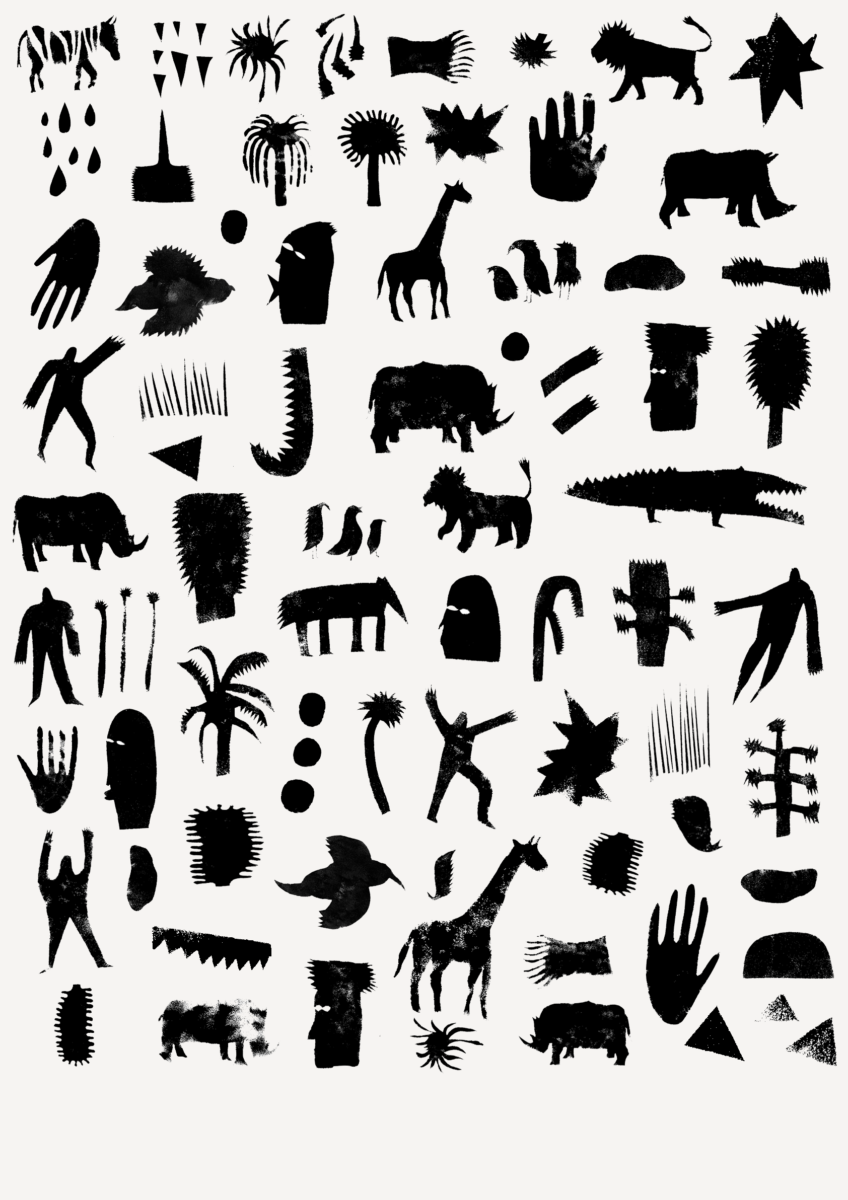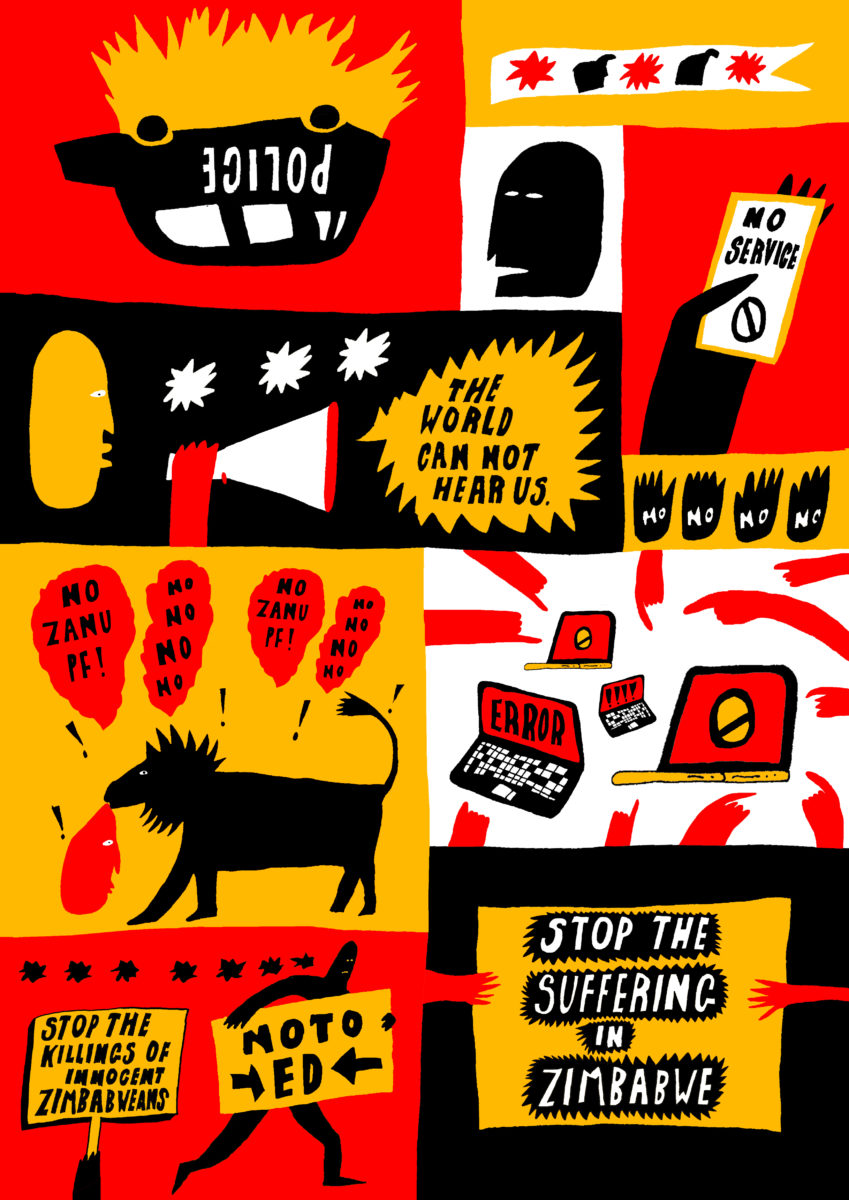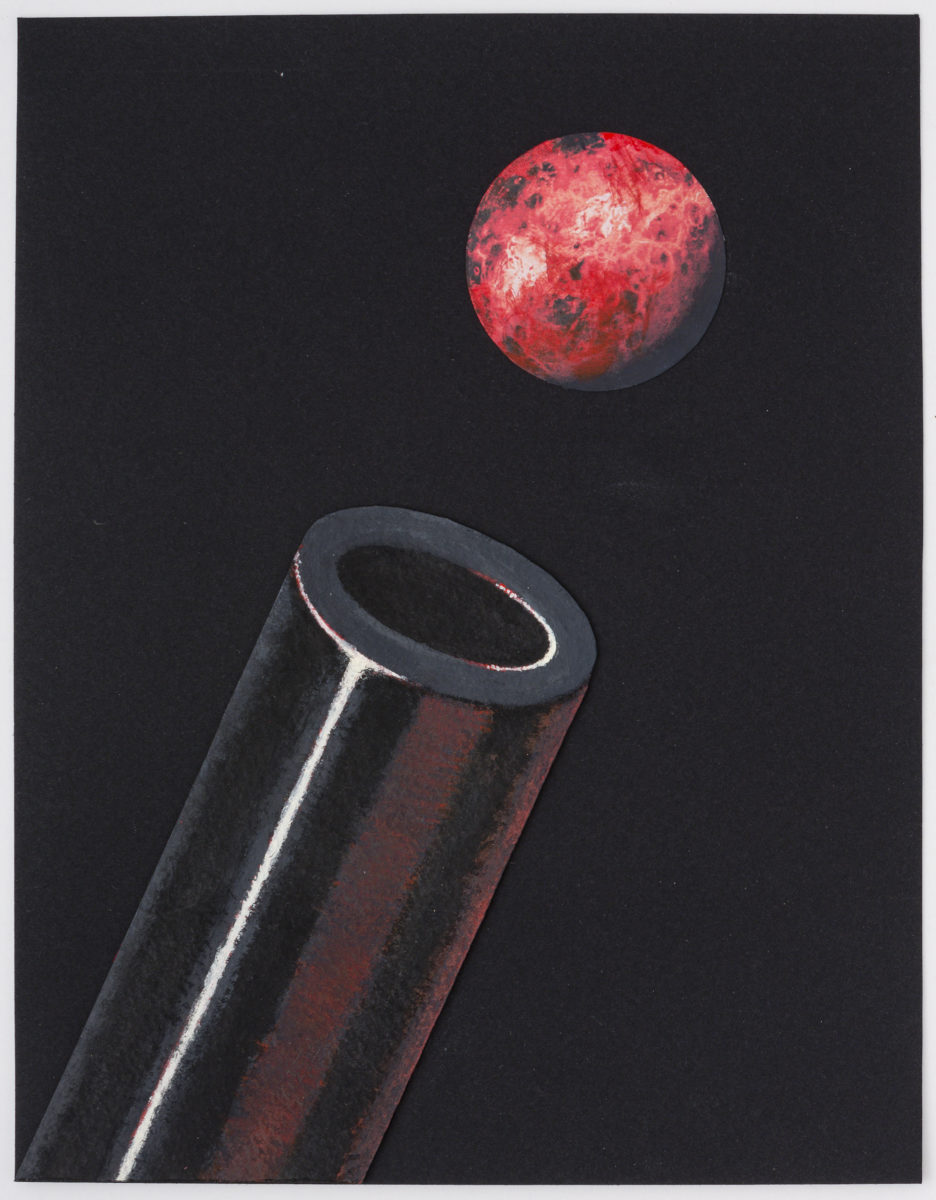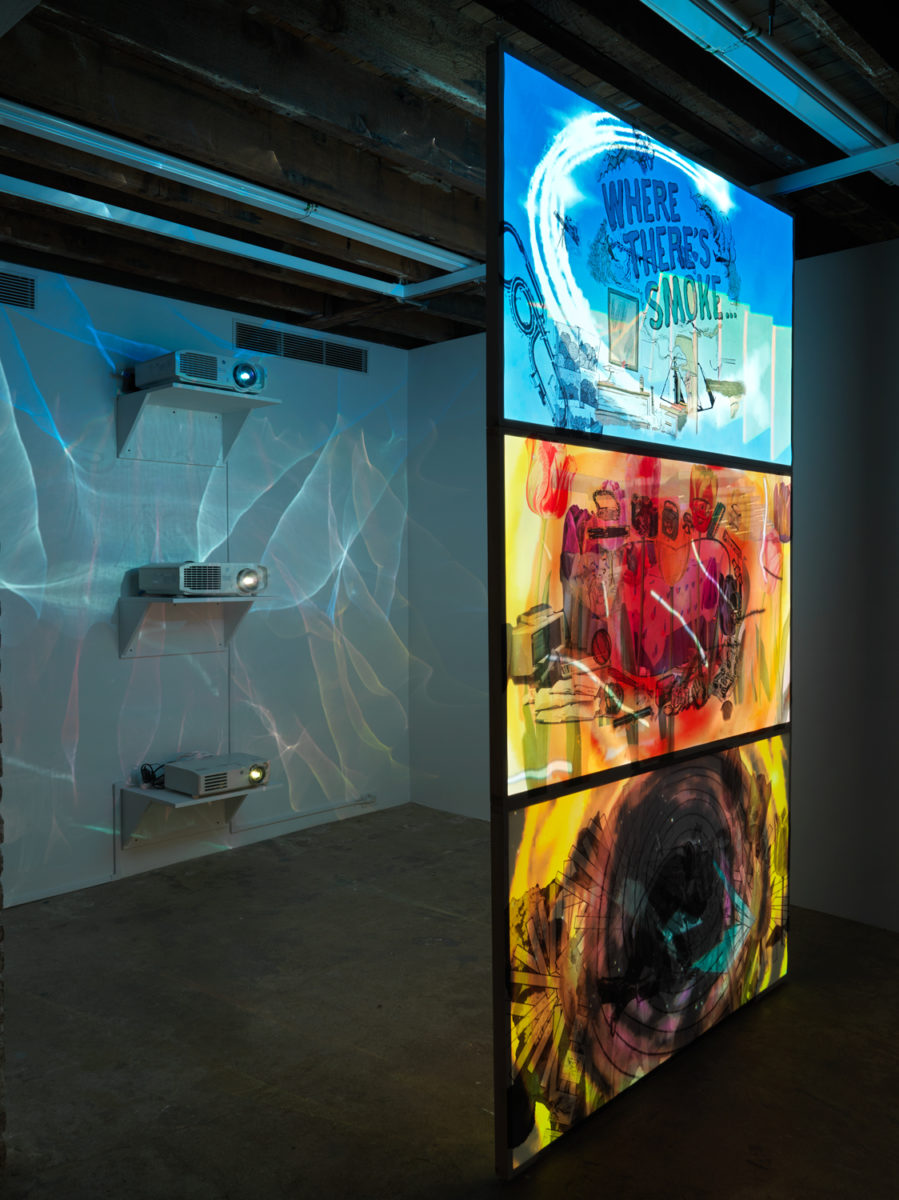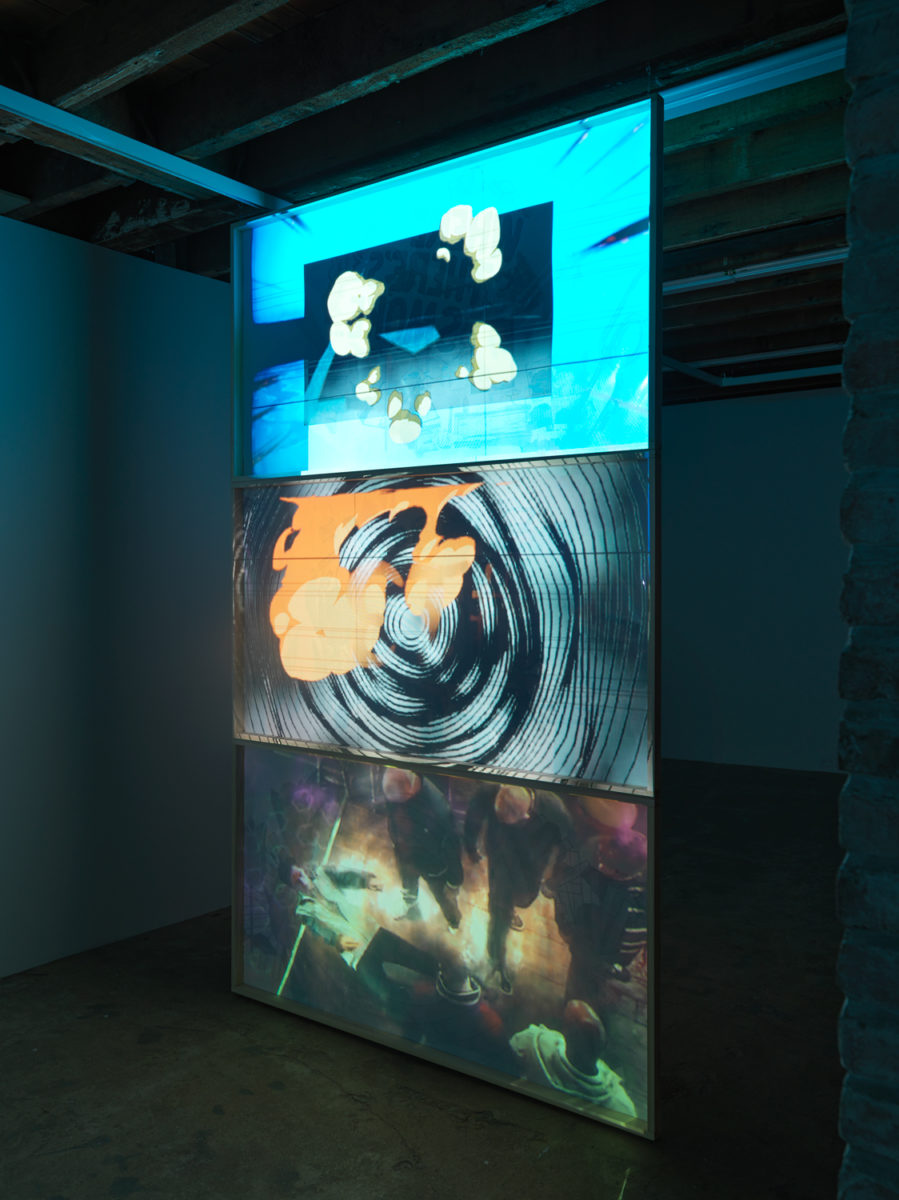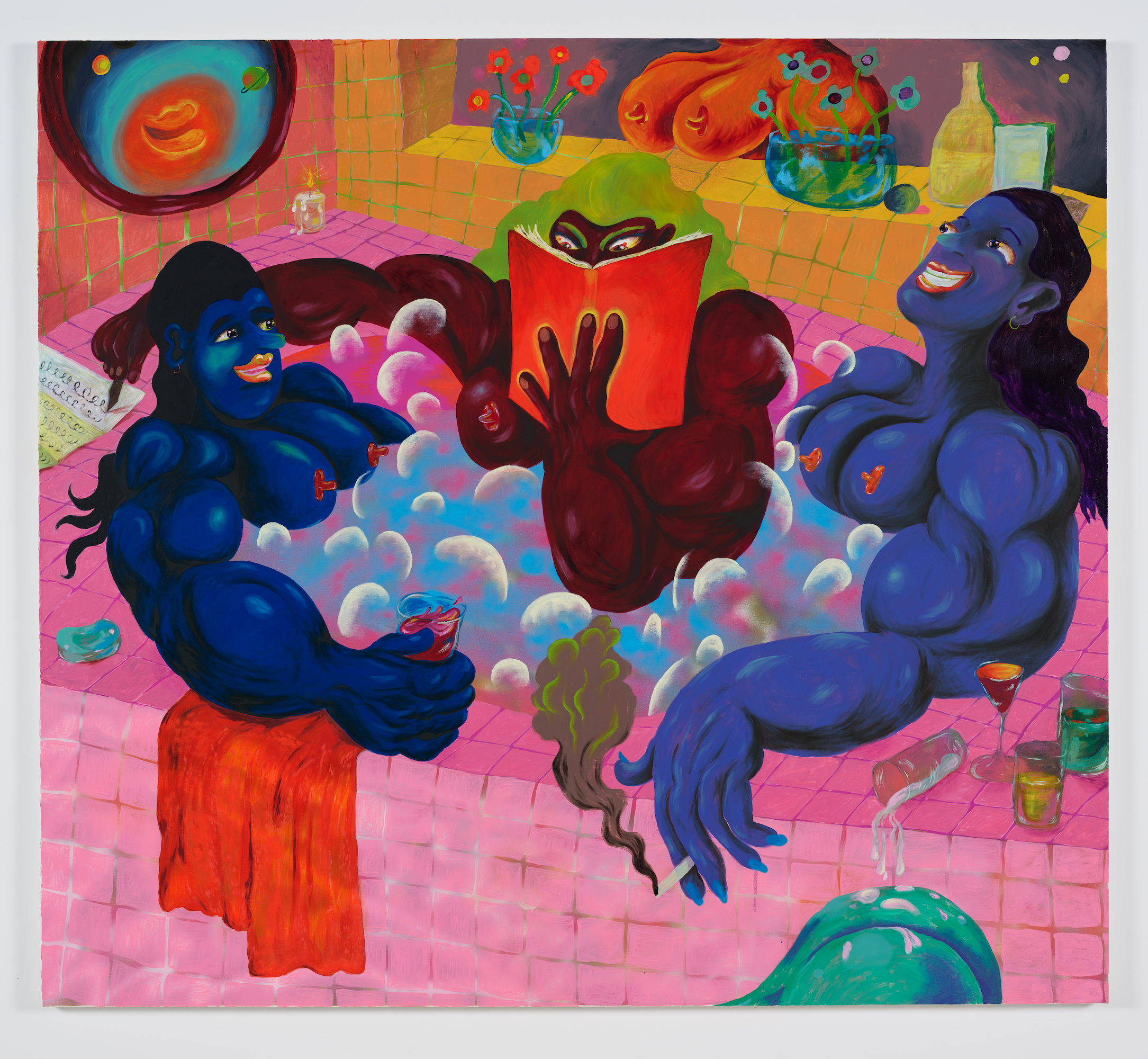
Painting: Ana Benaroya
Bodies swell and morph in the colourful paintings of New Jersey-born artist Ana Benaroya, taking on alternative forms with exaggerated breasts and muscles. The power dynamics of gender norms are taken apart in the process, and Benaroya offers a queer perspective on the body as it transforms. Her figures refuse easy categorisation, and are both distinctly human and, at times, super-human; one character lactates paint from their pointed breasts, while others entwine to become a single entity. Benaroya’s characters undoubtedly know how to have a good time: they drag deeply on cigarettes, knock back cocktails and play the piano. The legacy of comics and caricature can be instinctively felt here, notably the work of Robert Crumb and Tom of Finland, and Benaroya has previously worked as a commercial illustrator and designer. She completed her MFA at Yale last year, and has already staged shows at Ross + Kramer and Richard Heller galleries in New York and LA respectively this year. (Louise Benson)
- Yolande Mutale, Left: Zimbabwe, Middle: No Poaching, Right: Stop the Violence
Illustration: Yolande Mutale
After graduating from Central Saint Martins in 2019, Yolande Mutale’s sprightly, rich illustrations have leapt onto many different surfaces. One of her first projects post-graduation was a campaign with Nike for Black History Month. The celebratory, duotone imagery was packed with energy, beautifully capturing the spirit of sport. Mutale followed this up with another collaboration, this time with Baggu x Where Are the Black Designers, adorning tote bags with pastel-paletted messages to support Black creatives. Aside from these commercial commissions, there’s a political undercurrent to Mutale’s work that perfectly matches the vigor of her characters. The projects hidden away on her website are the ones that intrigue me the most; a delicate, hand-stencilled stop-motion film warns against the dangers of poaching in Zimbabwe, and a short exploring the relationship between serial killers and the women who write to them had me enraptured for a good 90 seconds. I hope 2021 sees more of her work exhibited at a larger scale—I have a signature Mutale print on my wall that’s just begging to be transformed into a mural. (Anoushka Khandwala)

Multimedia/Installation/Moving image/Sound: Shenece Oretha
Shenece Oretha is a multidisciplinary artist based in London, who was nominated by Zadie Xa as one of the ten early career artists featured in 2021 Jerwood Arts touring group exhibition Survey II. Her recent solo show at Cell Project Space in East London, Called to Respond, comprised a multi-channel work exploring Black voices by presenting texts and performances based on oral traditions. The title is a nod to the call-and-response form of some Black diaspora music, in which participation forms a unified whole. Two speakers have been modified to become automated percussion—one a tambourine, one a sort of shaker filled with rattling chicken bones—creating a disquieting and unpredictable counterpoint to the soothing amber light and hushed, layered dialogue that the artist used to fill the space. Oretha’s work is heavily research-led, and her Black Whole site is a fascinating repository for her findings and resources, which she invites visitors to use and share. (Emily Gosling)
- Emily Furr, Left to Right: Pop It Let It Bang 4, 5 and 9, 2020, gouache and collage on black watercolor paper
Painting: Emily Furr
New York-based artist Emily Furr paints with glorious precision, to create scenes that are part galactic adventure, part surrealist dreamscape. At times her works are subtly suggestive: two curvaceous rocket exhausts appear to emulate leather-clad cleavage, or a phone receiver nods to a fleshy orifice. Elsewhere, a slippery tongue finds itself more explicitly licking the barrel of a gun, or pushing itself through the opening of an indistinguishable tool. This wonderful mix of eroticism and mechanised objects is often enveloped in celestial landscapes, alluding to the complex sensuality embedded in the sci-fi genre. Furr visualises all of the awe and wonder found in these futuristic fantasies, while also evoking the powerful graphic language of the international Space Race, where bold symbolism announced the dawn of a new era. She is exhibiting at NADA Miami 2020 (until 5 December) with Sargent’s Daughters. (Holly Black)
View this post on Instagram
Photography: Wenjun Chen
There’s a beguiling simplicity to Wenjun Chen’s photographs. The former photo editor turned freelancer photographer and videographer is interested in themes that have come to define the contemporary age: humankind confronting the colossal things its created; so great that often all we can trace is our own existence. In Wenjun’s project Me and Me, he explores his relationship with artist Yanmei Jiang between 2007 and 2015, which developed from an artistic exchange to a romance. The work is presented in four parts: two photobooks documenting their private view of each other; a series of letters, and clips from social media that document their relationship as it played out in public. It’s a completely fascinating take on the idea of portraiture that examines all the facets that shape an individual’s image. (Charlotte Jansen)
- Guillermo Martin Bermejo, Erika and Klaus Mann's Dream: The Seven Deadly Sins, 2020. Pencil on old notebook paper.
Drawing: Guillermo Martin Bermejo
There is a very conscious naivety to Guillermo Martin Bermejo’s delicate pencil drawings, which reference historical works of art, literature and the artist’s personal heroes. He draws on the pages of old notebooks, often across multiple pieces of paper, giving the impression of miniature triptychs, which merge modern life on Earth with heavenly scenes. There is something comforting and wholesome about the technical skill of these works, which make me think of the private drawings and sketches artists may do for themselves; at the same time, they’re oddly unsettling. The Spanish artist is currently showing at James Freeman Gallery in London. The Draughtsman’s Song uses the past as “a poetic space”, writes the gallery. “It is the past as a gentle intimate world, full of intense feeling.” (Emily Steer)
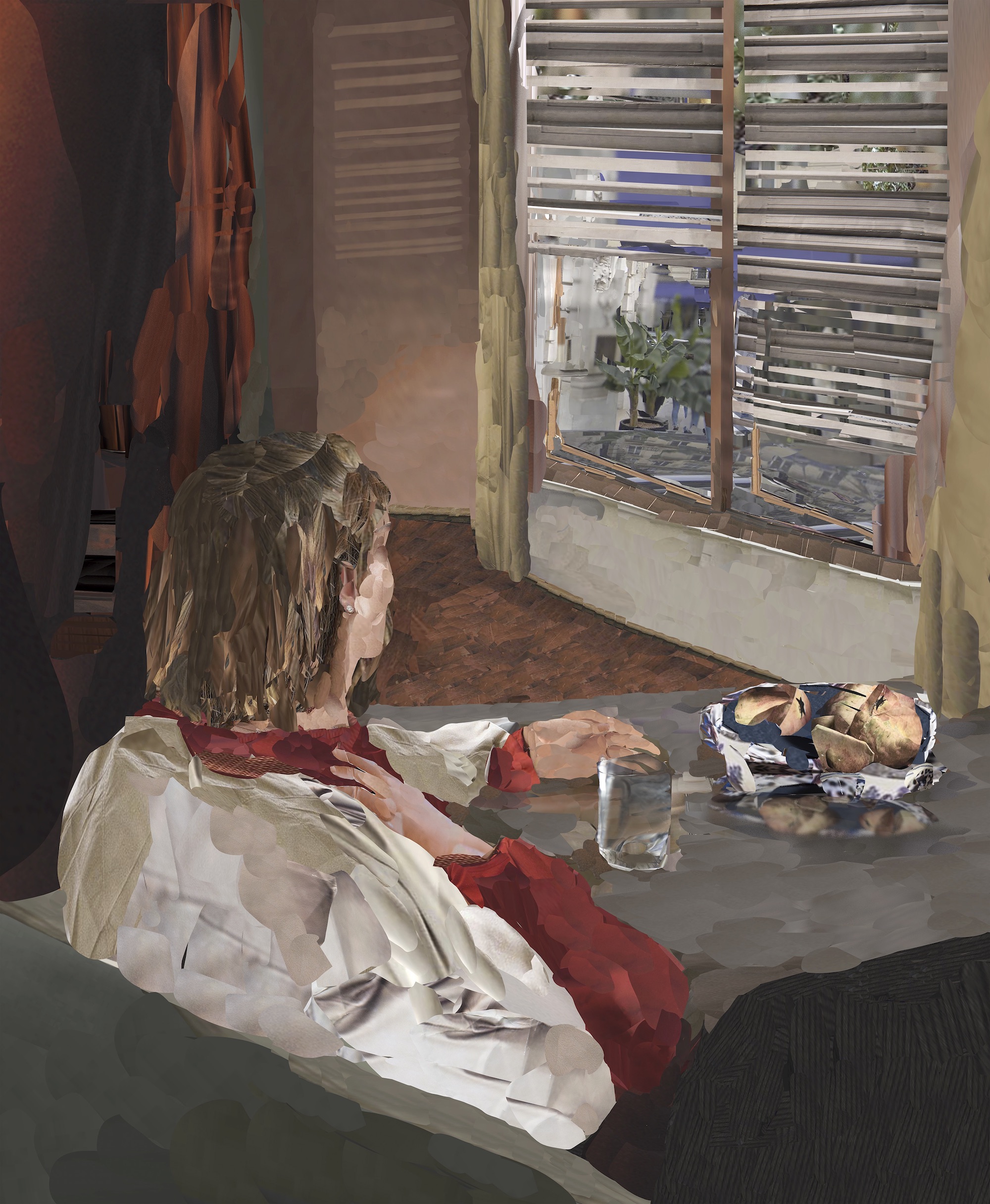
Photography / Collage: Alina Frieske
The multilayered work of German artist Alina Frieske is difficult to define; in her practice, photographic images are built up slowly from the fragments of digital imagery found online. She was chosen as one of five Ones to Watch by the British Journal of Photography this autumn, but her photographs do not involve the click and release of a shutter or lens. Instead, she compiles textures and colours from the digital detritus of the millions of pictures uploaded to the internet, engaging in a form of data collection as the basis and material for her portraits and still-life scenes. “I’m fascinated by the issues around photography, such as the circulation of images,” she explains. “I’m very interested in self-presentation as a way of exposure.” Frieske recently completed an MA in Photography at ECAL, Switzerland; her graduation project Abglanz comprised a series of domestic, intimate portraits, dappled with transitions in light and colour; as reminiscent of the formal portraiture of art history as they are the contemporary impulse to obsessively document our lives through the smartphone cameras that we keep permanently by our side. (Louise Benson)
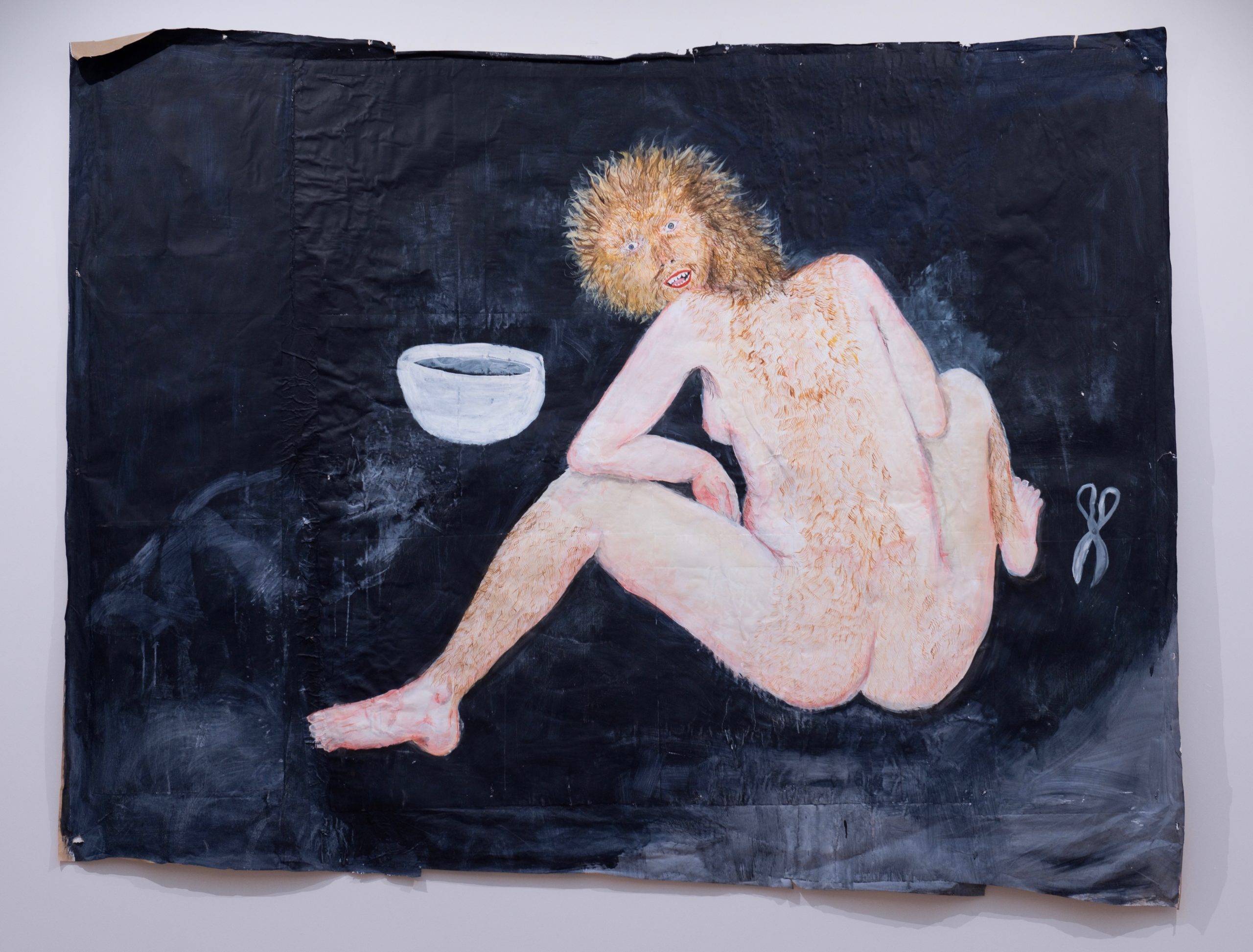
Painting / Mixed: Matilda Sutton
While animals and humans sit on the same broad ecological spectrum, the space in between them is often depicted in strict evolutionary terms rather than as a site of possibility and imagination. Matilda Sutton’s paintings seek to correct this, exploring the fuzzy boundaries humans arbitrarily draw between themselves and nature. Sutton uses constructed or collaged surfaces to emphasise the earthiness of her chosen settings and the physicality of her hybrid bodies: in Big Woman, an inky dark blue backdrop creases and folds, allowing the subject to float just above it while sitting on an endless floor beneath. Lady Shaver sees an elegant figure shave beside lush pastures, her skin luminous but face startled, as if tuning in to an abrupt sound off-canvas. Sutton uses cloth, clay and paper to create small white sculptures, their shapes archeological and precious when laid in rows together. There is violence and humour, too: Whoopsy is a dry title for a scene of near cannibalism against a blood red background. Sutton is a member of the Collective Studio Programme at The Newbridge Project in Gateshead and will be showing in the BALTIC Open Submission in 2021. (Ravi Ghosh)
View this post on Instagram
Photography: Yolanda Y Liou
You might already have noticed Yolanda Y Liou’s work: she just won third prize in the Taylor Wessing Photographic Portrait Prize and her work has been hanging as part of that exhibition at the National Portrait Gallery, making her part of an historic all-female shortlist for the prize. Her winning portrait is of collaborator Enam Ewura Adjoa Asiama, who Liou found through social media. The portrait simultaneously tells Asiama’s story and Liou’s: the photographer’s negative perceptions of her own body influenced by narrow beauty stereotypes growing up in Taiwan lead to years of struggle that she only began to navigate when she picked up the camera. When she encountered Asiama’s body positivity online it was a revelation and in turn Liou gave Asiama total agency during their shoots, part of an ongoing project. “I create images, images don’t create me,” as Liou put it, which captures why the female gaze is so necessary for young women today. (Charlotte Jansen)
- Jibade-Khalil Huffman, Left: Untitled (Explosion), Right: When There's Smoke. 2020. Inkjet on transparencies, video installation
Performance/Installation: Jibade-Khalil Huffman
Jibade-Khalil Huffman’s New York solo exhibition Total Running Time at Magenta Plains comprises a site-specific installation of video projections, photographic light boxes and photo collages printed on translucent layers to suggest ideas around memory and language, and how these specifically play out in terms of race and visibility. As the title suggests, the piece is also about duration and the idea of “athletic prowess”: images of Venus and Serena Williams suggest the disproportionate scrutiny placed on Black bodies. According to the gallery, “For Huffman, the futility of a temporal artwork’s completeness and the unspoken expectations of performance—of self, race, and image—relate directly to the day-to-day performance of life as an artist.” As with much of Huffman’s work, the piece draws on the intersection of writing, poetry, found media and everyday speech; as well as using a diverse array of subject matter including TV guides, abstracted maps, television stills, diagrams, staircases, annotations, cartoons, advertisements and more. The show runs until 16 December. (Emily Gosling)

Painting: Jazmin Donaldson
Jazmin Donaldson was one of the standout painters in the Slade’s 2019 graduate shows, with playful, dark works full of mythical beasts, nude bodies and symbols of death. She brings together contemporary mundanity and autobiographical aspects with the drama of ancient storytelling, creating moments of both humour and menace. Blood red dominates many of her paintings, dripping over other forms on the canvas, or slathered onto moody backgrounds. The Argentinian artist has recently created a series of affordable paintings for Spanish arts platform WeCollect, which feel particularly in tune with 2020, infusing domestic settings such as the dinner table or kitchen floor with slashes of violent, animalistic surrealism. (Emily Steer)
View this post on Instagram
Photography: Min Hyun-woo
Min Hyunwoo’s photographs are entrancing. A scroll through his Instagram demonstrates his prowess with a camera, but it’s actually his portfolio website that showcases who he is as a practitioner. We Are Going to Live This Summer epitomises the freedom of floating. In these images, glassy water simultaneously lends itself to density and buoyancy, while youths (the artist’s friends) frolic around, half submerged. Sunlight glances off their gleaming skin, and the combination of the dreamy setting and Min’s eye for detail encourages the viewer to wade in with them. The context of being endlessly stuck in dark, dusty homes augments this desire to join the subjects, who seem to have cracked what it means to be free. (Anoushka Khandwala)

